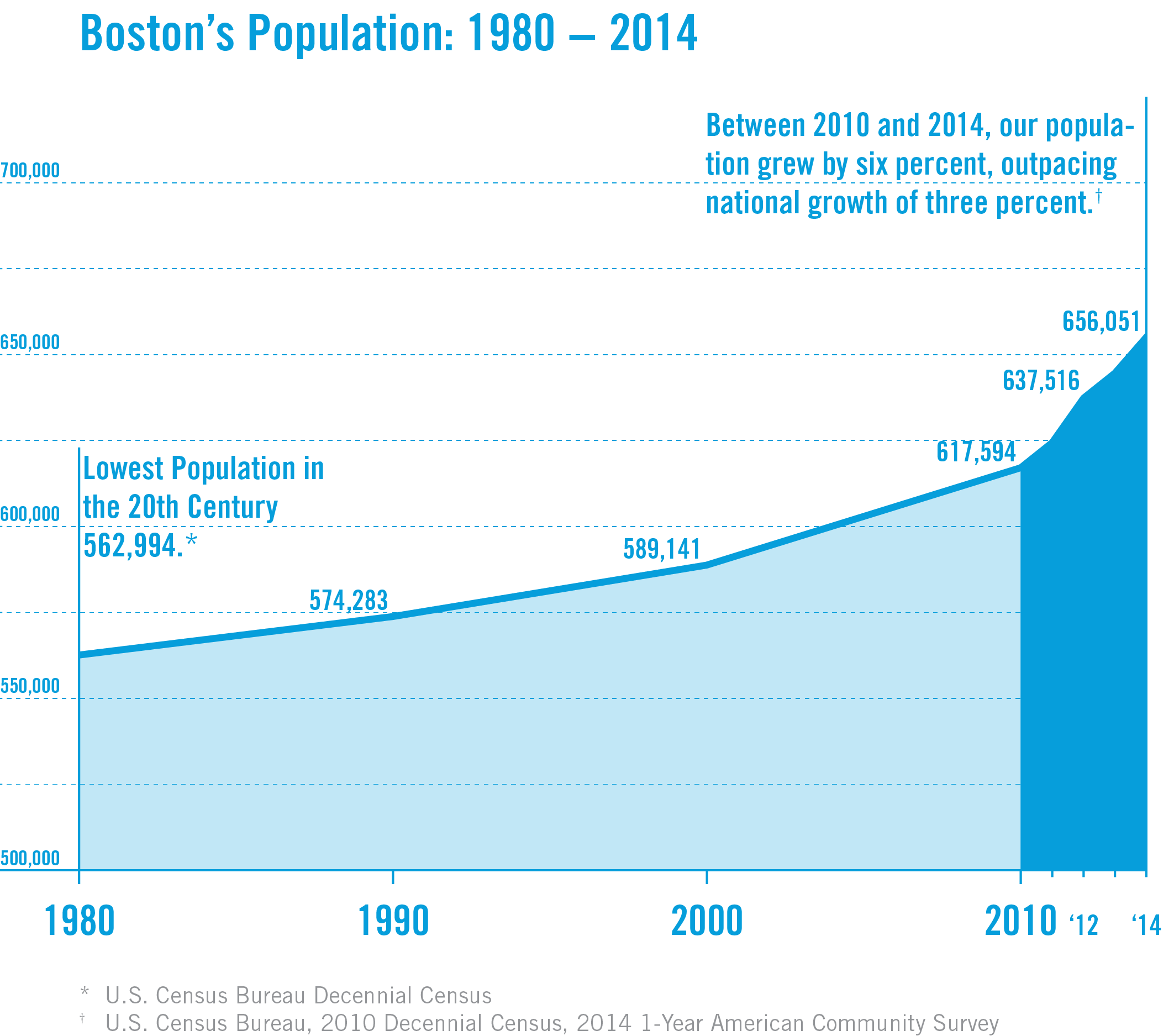Imagine Boston 2030: City is experiencing phenomenal growth
The City of Boston is changing, and the statistics prove it.
No other major American city has made as dramatic a transition from post-industrial urban decline to significant job creation since 1980.
Boston’s vibrant neighborhoods, cultural assets, highly productive workers, innovative businesses, and renowned hospitals and universities have spurred this era of rapid growth.
Between 2010 and 2014, our population grew by six percent, twice the rate of the nation.[1]
By 2030, Boston will be home to at least 709,000 residents, an increase of eight percent from our current population and a number Boston has not seen since before 1960.[2]
To house our growing population and reduce pressure on the housing market, we need to add at least 53,000 additional housing units.[3]
These new units must reflect our shifting demographics: households are smaller, with many more young adults and baby boomers seeking suitable housing that meets their preferences and that they can afford.
Alongside population growth, Boston added nearly 45,000 jobs between 2010 and 2014.[4]Strong growth in professional services, health care and education has fueled this seven percent increase and created a highly productive economy.[5]
Today, Boston workers are more productive than the average American worker, and their greater productivity adds $24 billion in incremental productivity to the Boston economy every year.[6]
The commercial office sector has expanded alongside job growth, with 4.8 million square feet of new office space constructed between 2010 and 2015, a nearly 5 percent increase in the city’s office stock, and another 4.2 million square feet of office space under construction or approved.[7]
This recent and upcoming office construction is equivalent to adding over seven new Prudential Towers to the City.
As we build new housing and office space, we must invest in improvements that ensure growth is inclusive and enables us to attract new workers and businesses.
Over the coming months, we seek your input to identify how we can welcome new residents and workers, while making Boston a more inclusive city for those who live and work here today. This feedback will inform our strategy for guiding Boston’s growth, which we will release in Summer 2016.
Weigh in on where and how Boston can grow and share your thoughts in person by attending our community workshops or meeting with our street teams. Connect with us on social media (Twitter, Facebook, Instagram) using #ImagineBoston. You can also sign up for Imagine Boston updates here.
[1] U.S. Census Bureau, 2010 Decennial Census, 2014 1-Year American Community Survey
[2] Metropolitan Area Planning Commission (2010-2030 demographic forecasts as used in Housing A Changing City, Boston 2030)
[3] Housing A Changing City, Boston 2030
[4] Economic Modeling Specialists, Inc..
[5] Economic Modeling Specialists, Inc. National job growth between 2010 and 2015 was six percent.
[6] U.S. Bureau of Economic Analysis, Massachusetts Executive Office of Labor and Workforce Development (DWD), BRA Research Division Analysis
[7] CoStar 2010-2015 Office Deliveries, BRA Project Pipeline Database



